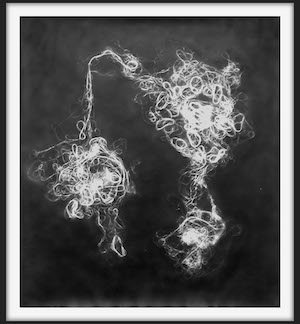Pepperdine to Present It's All Black & White: Contemporary Art from the Frederick R. Weisman Art Foundation
 The Frederick R. Weisman Museum of Art at Pepperdine University will present It’s All Black & White: Contemporary Art from the Frederick R. Weisman Art Foundation from Tuesday, August 27, through Sunday, December 8. A special opening reception will
be held on Sunday, September 15, from 4 to 6 PM, and will begin with a walkthrough
tour guided by foundation director Billie Milam Weisman. There is no admission charge
and the public is invited to attend.
The Frederick R. Weisman Museum of Art at Pepperdine University will present It’s All Black & White: Contemporary Art from the Frederick R. Weisman Art Foundation from Tuesday, August 27, through Sunday, December 8. A special opening reception will
be held on Sunday, September 15, from 4 to 6 PM, and will begin with a walkthrough
tour guided by foundation director Billie Milam Weisman. There is no admission charge
and the public is invited to attend.
Early in the 20th century Russian artist Kazimir Malevich revolutionized art with his Black Square of 1915 and his White on White of 1918. He set the tone for later developments by showing how powerfully expressive paintings can be made using only pure black or pure white.
In color theory, black and white are complete opposites. Where black is the absorption or absence of visible light, white is the totality of all visible wavelengths of light. For decades artists have used these stark opposites to explore a range of concerns, ranging from spirituality to formalism to realism to pure visual sensation. Rather than limit the possibilities, black and white expanded the range of expression available to artists.
This exhibition focuses on how contemporary artists since 1970 have used black and white. The majority of the works are American, with a special focus on works from California. Included are seminal movements such as Pop Art, Process Art, Light and Space, New Figuration, Appropriation Art, Expressionism, and more. It features works by Lita Albuquerque, Charles Arnoldi, Natalie Arnoldi, Richard Artschwager, Larry Bell, Kelly Berg, Tara Donovan, Joe Goode, Jasper Johns, Andy Moses, Ed Moses, Manfred Muller, Robert Rauschenberg, Analia Saban, Andy Warhol, Emerson Woofer, and many others.
“Black and white are conceptual but also sensuous. This exhibition is smart but also stylish,” said Michael Zakian, director of the Weisman Museum.
Highlights of the exhibition will include:
Pop Art
While Pop Art is usually linked to the garish colors of modern advertising, the movement also produced more restrained images. Jasper John’s Black Flags reworks an iconic image into meditative patterns of black and white tones. Robert Rauschenberg’s black and white photographs reveal the artist searching for source material to be incorporated into his larger works.
Process Art
In the 1970s artists turned their attention to exploring new materials. Ed Moses’ canvases push the boundaries of transitory processes, turning accidental marks and spills into images that synthesize American and Asian aesthetics. Emerson Woelffer, known primarily as a painter, is represented by clay sculpture that transform his gestural marks into three-dimensional forms that rethink the traditional vessel.
 Father and Daughter Duo
Father and Daughter Duo
Malibu resident Charles Arnoldi, who began his career in the 1970s with Process Art utilizing wood, moved beyond this style in the early 90s by returning to traditional material such as oil paint and bronze. He would periodically turn to black and white to rethink the basic propositions of his art. He is joined by his daughter, Natalie Arnoldi, whose art, inspired by the emptiness of Edward Hopper and film noir, re-envisions the familiar icons of Southern California streets as haunting, vacant sites.
Light and Space
This movement of the 1960s and 70s utilized real and light and actual space to explore perceptual phenomena. Larry Bell, a pioneer of the movement, explored ways of trapping and releasing light in both glass boxes and iridescent paintings. Lita Albuquerque created work exploring the poetic and ephemeral aspects of the landscape around us.
Appropriation
A dominant force in 1980s art, Appropriation recycled pre-existing images by presenting them in new, unexpected formats. John Baldessari’s Horizontal Men of 1984 features still photos of dead men taken from B&W western and war movies—and draws attention to violence in popular media. Tim Berresheim’s Wig series captures female wigs floating against incongruous backgrounds, creating surreal images that blend the familiar with the strange.
Recent Abstraction
Tara Donovan emerged in the early 2000s as a new type of Process Artist. She takes everyday materials, such as plastic straws, styrofoam cups, and ball-point pens, turning them into constructions of accumulation that amaze with stunning atmospheric effects. Kelly Berg’s expressionist abstract landscapes enter into a post-apocalyptic world.
Funding has been provided by the Frederick R. Weisman Art Foundation and an anonymous donor. This exhibition was curated by Billie Milam Weisman.
For additional information about this exhibition, visit the Weisman Museum website.